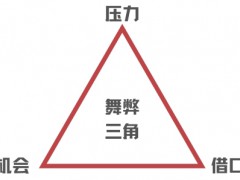据国际可再生能源署网站7月13日阿联酋阿布扎比报道,IRENA的最新报告显示,2021新增的近三分之二的可再生能源成本低于G20国家中最便宜的燃煤能源电力成本。2021年可再生能源成本继续下降,因为供应链挑战和商品价格上涨尚未充分显示其对项目成本的影响。与2020年相比,陆上风电成本下降了15%,海上风电成本下降了13%,太阳能光伏成本下降了13%。
国际可再生能源机构(IRENA)今天发布的《2021可再生能源发电成本》显示,2021新增可再生能源装机中,有近三分之二或163吉瓦(GW)的成本低于G20中世界上最便宜的燃煤发电方案。IRENA估计,考虑到当前高涨的化石燃料价格,2021新增的可再生能源将为2022年的全球发电成本节省约550亿美元。
IRENA的新报告确认了具有价格竞争力的可再生能源在解决当今能源和气候紧急情况方面发挥的关键作用,即向根据1.5℃的升温限度和《巴黎气候协定》的目标加快过渡。太阳能和风能的项目交付周期相对较短,是各国努力迅速减少并最终淘汰化石燃料以及限制其造成的宏观经济损害以实现净零碳排放的重要支柱。
IRENA总干事Francesco La Camera表示:“可再生能源是目前为止最廉价的能源,2022年是一个鲜明的例子,说明了新的可再生能源发电在经济上的可行性。可再生能源使经济体摆脱了化石燃料价格和进口的波动,抑制了能源成本,提高了市场弹性——如果今天的能源紧缩持续下去,效果更为显著。”
“虽然在当前形势下,可能需要临时应对危机,但从中长期来看,软化气候目标的借口是站不住脚的。如今迫切的能源局势警醒了所有人,即可再生能源和节能是未来。随着埃及COP27和阿联酋COP28的召开,可再生能源为各国政府提供了负担得起的能源,来使其能实现零排放目标,并改善其气候。”他补充说道,“我们将采取具体行动,为当地人民带来真正的利益。”
正如IRENA的成本数据所强调的那样,可再生能源投资在2022年继续产生巨大的回报。在非经合组织国家,2021年增加的109吉瓦可再生能源的成本低于最便宜的新增化石能源电力成本,并在未来25至30年内,每年还将至少减少57亿美元的成本。
2021年和2022年煤炭和化石气价格居高不下,也将严重削弱化石燃料的竞争力,使太阳能和风能更具吸引力。例如,随着欧洲化石天然气价格空前飙升,欧洲化石天然气发电在其生命周期内带来的经济效益将不断降低,从而增加资产搁浅的风险。
欧洲的例子表明,现有天然气发电厂在2022年的燃料和二氧化碳成本可能平均高出2021年投产的新太阳能光伏和陆上风电的寿命成本的4到6倍。2022年1月至5月,太阳能和风力发电可能为欧洲节省了不低于500亿美元的化石燃料进口,其中以化石燃气为主。
至于供应链方面,IRENA的数据表明,并非所有材料成本的增加都已转化为设备价格和项目成本。如果原材料成本继续升高,2022年的商品价格压力将更加明显。然而,与更高的化石燃料价格相比,这一上涨对于具有价格竞争力的可再生能源的整体收益而言是微不足道的。
梁金燕 编译自 国际可再生能源署网站
原文如下:
Renewable Power Remains Cost-Competitive amid Fossil Fuel Crisis
New IRENA report shows almost two-thirds of renewable power added in 2021 had lower costs than the cheapest coal-fired options in G20 countries.
Abu Dhabi, UAE, 13 July 2022 – Costs for renewables continued to fall in 2021 as supply chain challenges and rising commodity prices have yet to show their full impact on project costs. The cost of electricity from onshore wind fell by 15%, offshore wind by 13% and solar PV by 13% compared to 2020.
Renewable Power Generation Costs in 2021, published by the International Renewable Energy Agency (IRENA) today, shows that almost two-thirds or 163 gigawatts (GW) of newly installed renewable power in 2021 had lower costs than the world’s cheapest coal-fired option in the G20. IRENA estimates that, given the current high fossil fuel prices, the renewable power added in 2021 saves around USD 55 billion from global energy generation costs in 2022.
IRENA’s new report confirms the critical role that cost-competitive renewables play in addressing today’s energy and climate emergencies by accelerating the transition in line with the 1.5°C warming limit and the Paris Agreement goals. Solar and wind energy, with their relatively short project lead times, represent vital planks in countries’ efforts to swiftly reduce, and eventually phase out, fossil fuels and limit the macroeconomic damages they cause in pursuit of net zero.
“Renewables are by far the cheapest form of power today,” Francesco La Camera, Director-General of IRENA said. “2022 is a stark example of just how economically viable new renewable power generation has become. Renewable power frees economies from volatile fossil fuel prices and imports, curbs energy costs and enhances market resilience – even more so if today’s energy crunch continues.”
“While a temporary crisis response might be necessary in the current situation, excuses to soften climate goals will not hold mid-to-long-term. Today’s situation is a devastating reminder that renewables and energy saving are the future. With the COP27 in Egypt and COP28 in the UAE ahead, renewables provide governments with affordable energy to align with net zero and turn their climate promises into concrete action with real benefits for people on the ground,” he added.
Investments in renewables continue to pay huge dividends in 2022, as highlighted by IRENA’s costs data. In non-OECD countries, the 109 GW of renewable energy additions in 2021 that cost less than the cheapest new fossil fuel-fired option will reduce costs by at least USD 5.7 billion annually for the next 25-30 years.
High coal and fossil gas prices in 2021 and 2022 will also profoundly deteriorate the competitiveness of fossil fuels and make solar and wind even more attractive. With an unprecedented surge in European fossil gas prices for example, new fossil gas generation in Europe will increasingly become uneconomic over its lifetime, increasing the risk of stranded assets.
The European example shows that fuel and CO2 costs for existing gas plants might average four to six times more in 2022 than the lifetime cost of new solar PV and onshore wind commissioned in 2021. Between January and May 2022, the generation of solar and wind power may have saved Europe fossil fuel imports in the magnitude of no less than USD 50 billion, predominantly fossil gas.
As to supply chains, IRENA’s data suggests that not all materials cost increases have been passed through into equipment prices and project costs yet. If material costs remain elevated, the price pressures in 2022 will be more pronounced. Increases might however be dwarfed by the overall gains of cost-competitive renewables in comparison to higher fossil fuel prices.
免责声明:本网转载自其它媒体的文章及图片,目的在于弘扬石化精神,传递更多石化信息,宣传国家石化产业政策,展示国家石化产业形象,参与国际石化产业舆论竞争,提高国际石化产业话语权,并不代表本网赞同其观点和对其真实性负责,在此我们谨向原作者和原媒体致以崇高敬意。如果您认为本站文章及图片侵犯了您的版权,请与我们联系,我们将第一时间删除。







